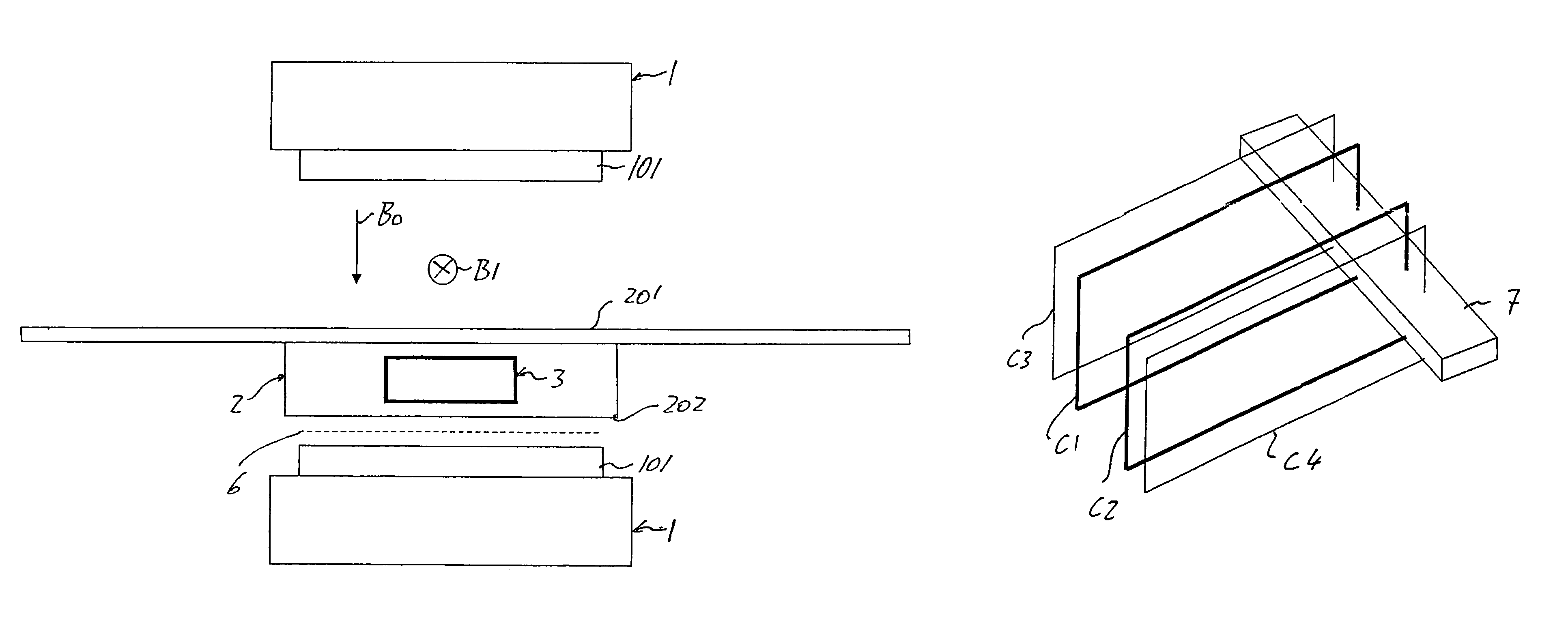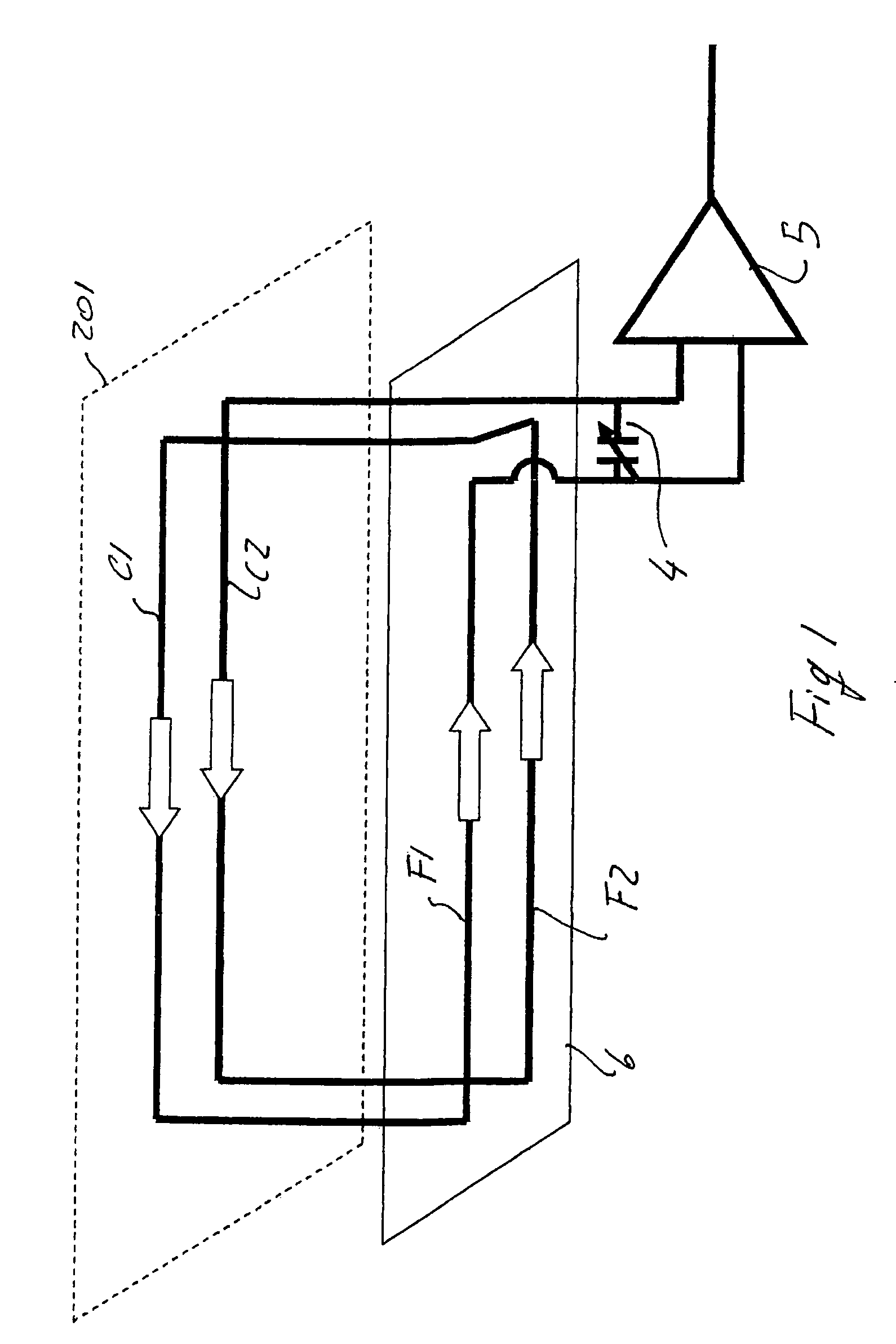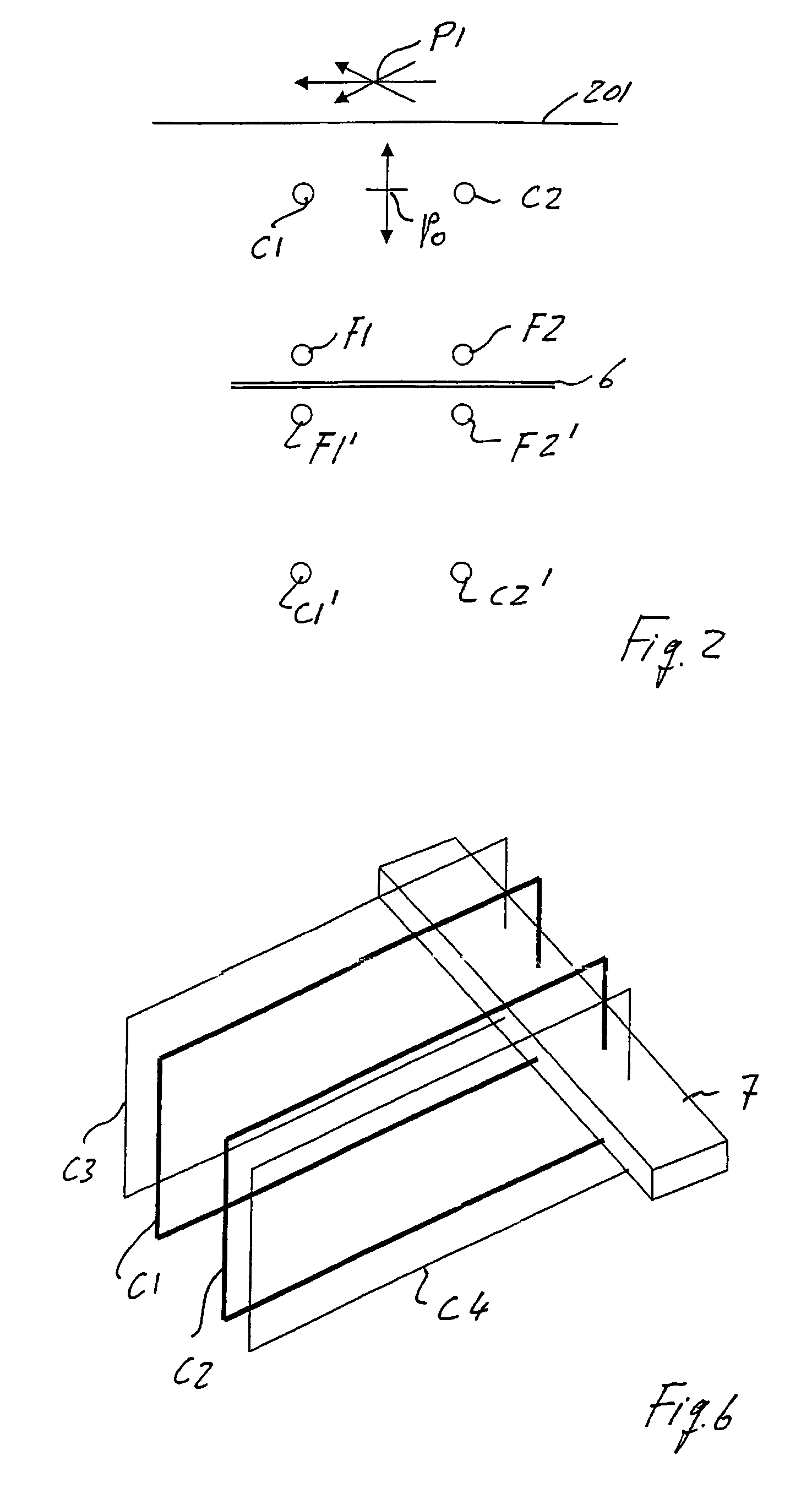Receiving coil for nuclear magnetic resonance imaging apparatus for spinal column images
a nuclear magnetic resonance imaging and spinal column technology, applied in the direction of superconducting magnets/coils, using reradiation, magnetic materials, etc., can solve the problems of loss of sensitivity in the deep areas of the part under examination, poor contribution to the coil field in some points inside the area under examination, and inability to consider, etc., to achieve easy integration with further turns, simple and cost-effective construction, and increase sensitivity
- Summary
- Abstract
- Description
- Claims
- Application Information
AI Technical Summary
Benefits of technology
Problems solved by technology
Method used
Image
Examples
Embodiment Construction
[0025]In FIG. 5 an MRI apparatus is schematically shown which is particularly dedicated to imaging the spine or part thereof. The apparatus includes a magnetic structure 1 for generating a vertical static magnetic field B0 between two poles 101. The static magnetic field is indicated by the arrow B0. An examination table 2 for supporting the patient includes an horizontal supporting bench 201 for the patient that has to be laid supine on said bench.
[0026]The supporting bench 201 is supported by a bearing structure 202 that has a certain thickness and wherein a chamber can be obtained for accommodating a receiving coil 3. As it will result with reference to the following description, the receiving coil 3 is manufactured so as to generate a field indicated at B1 and oriented in the horizontal plane and having a perpendicular direction with respect to the static field B0. The field B1 that is perpendicular to the drawing sheet is indicated by the star B1 in FIG. 5. In the same figure, ...
PUM
| Property | Measurement | Unit |
|---|---|---|
| static magnetic field | aaaaa | aaaaa |
| length | aaaaa | aaaaa |
| width | aaaaa | aaaaa |
Abstract
Description
Claims
Application Information
 Login to View More
Login to View More - R&D
- Intellectual Property
- Life Sciences
- Materials
- Tech Scout
- Unparalleled Data Quality
- Higher Quality Content
- 60% Fewer Hallucinations
Browse by: Latest US Patents, China's latest patents, Technical Efficacy Thesaurus, Application Domain, Technology Topic, Popular Technical Reports.
© 2025 PatSnap. All rights reserved.Legal|Privacy policy|Modern Slavery Act Transparency Statement|Sitemap|About US| Contact US: help@patsnap.com



